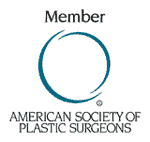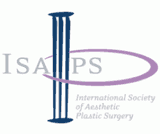Sagging skin – Face & neck lifting

 Face is the central organ in the human body and the center of feelings
and emotions. Anatomically, it consists of skin, subcutaneous fat, fascias,
and muscle and nerve regions. The whole structure is based on bone
structures, i.e. the bones of the facial skull.
Face is the central organ in the human body and the center of feelings
and emotions. Anatomically, it consists of skin, subcutaneous fat, fascias,
and muscle and nerve regions. The whole structure is based on bone
structures, i.e. the bones of the facial skull.
The face comprises the following aesthetic units, each of which plays its fundamental role in the face:
- Forehead: its movement shows the expressiveness and character of a person
- Eyes and eyelids: express our feelings
- Main or median face
- Neck: its anatomy varies from person to person
Aging, sun rays, smoking and other habits, as well as inheritance, change
how our face looks. Initially, expression lines develop on the forehead and
the sides of the eyes. Next, gravity wrinkles appear around the mouth, as a
result of skin and surrounding tissues sagging, such as the SMAS and the
popliteus and the neck.
In addition to the above, we also have photaging, filamentous thin wrinkling
and discolorations, the so-called age spots.

Skin sagging commonly starts in the eyelids, after the age of 35-40, and, depending on hereditary factors, it gradually extends to the face and neck. Characteristically, it manifests on the mandibular line division, perioral wrinkles, nasolabial wrinkles and neck sagging; the neck skin initially loosens under the chin and later extends to the main neck and vertical chords.
Skin sagging is treated with face and neck lifting. Face lifting repairs and restores loosen skin and the SMAS, while it restores lost cheekbones volume, stretches the skin line in the mandible, improves the nasolabial grooves, restores the neck, and may be combined with Blepharoplasty for the rejuvenation of the eye area.
On many occasions, extra therapies may be required, such as botox,
hyaluronic acid, fat transfer and laser to strengthen the outcome.
Mentally unstable patients, smokers and diabetics must be thoroughly
examined before a plastic surgeon agrees to perform a face lifting on
them.
The Face Lifting
Face lifting has gone through a lot of stages, and each plastic surgeon follows his preferred surgery protocol to deliver satisfying results. As every plastic surgery presupposes specific indications in order to deliver good results, the same applies to lifting, too.
Technically, face lifting is a repair procedure and is performed to
correct droopy face, i.e. restore the skin, muscles and fascias to their
previous state, and surgically manage face and neck sagging.
As we shall describe later on, face lifting has gone through many stages
over the years. Yet, classic face lifting is the procedure to treat face
and neck sagging.
This is where a plastic surgeon’s multiyear experience plays a key
role. For he has seen in practice the pros and cons of every technique,
and he is able to determine the technique that will deliver the best
results for each patient individually. Modern trends require face
lifting combined with volumetric augmentation of the bone areas, e.g.
cheekbones, chin.
Lifting schools are classified according to their extent and the
anatomic elements involved in the procedure.
1. SMAS Face Lifting


The common face lifting. The incision starts on the temporal area inside the hair, advances to the front of the ear, and ends behind it, so that it hides inside the hair again. The procedure involves the detachment and reapplication of the skin, fascias, and muscle elements of the face to restore it to a more youthful position (Superficial Musculo Aponeurotic System face lift - SMAS). The surgery lasts 3-3.5 hours, the patient is hospitalized for 1-2 days and recovery takes 10 days. If performed by a highly skilled and experienced surgeon, the surgery delivers excellent results.
 2.
Deep-plane facelift
2.
Deep-plane facelift
It is a modified SMAS lifting. It releases the buccal fat and certain
muscle groups from the bone structures.
It is a complex lifting with limited applications,
Figure: blue color corresponds to the route of the skin during face lifting,
green corresponds to the incision during short scar face lifting, and red
corresponds to the detachment of tissues during classic face lifting.
3.Composite facelift
It is a SMAS lifting, but it includes the eyelid muscle, as it is responsible for lower eyelid drooping,
4. Mid face-lift
It is applied on the middle face and extends to the jawline, i.e. the mandibular line. The best candidates for this type of surgery are aged around 45 years.
5. Mini-facelift
It is like classic lifting, but it does not include the neck and the incision is shorter; the so-called short scar-face lift. Patients undergoing the surgery usually have sagging skin in the middle face but their neck looks good.
6. Thread Lift
It is a bloodless lifting involving sutures and local anesthesia and is aimed at individuals who want only micro-corrections. The result, depending on the types of sutures, is either temporary or permanent, but its outcome is a lot more inferior to that of the classic face lifting. A couple of disadvantages are localized skin shrinkage and nubs.
7. Subperiosteal facelift
Ideal in cases of droopy cheekbones, deep nasolabial grooves. It is characterized by tissue detachment from the bone structures and the incision is performed not only on the skin but also inside the mouth, as it happens in facial implant placement. It is combined with classic face lifting.
8. MACS facelift
It requires a smaller incision and is based on the vertical suspension of the tissues with sutures. It extends shorter than classic face lifting and has shorter duration and recovery time.
Complications
Complications are uncommon in face lifting and completely manageable.
- Hematoma, i.e. blood collection under the skin. For this reason, plastic surgeons worldwide use special devices to drain the blood from the surgical wound. Thorough hemostasis and proper blood pressure regulation in combination with a patient’s good medical history prior to the surgery for the administration of medications that may affect the procedure constitute doctrines for the avoidance of hematoma.
- Micro-injuries on the aesthetic nerve endings which create temporary numbness.
- Ugly scars are rare complications of face lifting. Usually, the face has good hematosis and the healing mechanism works very well on the face.
- Loss of hair in the area around the incision on the scalp is not a
common complication.
Face Lifting. Photos Before - after












